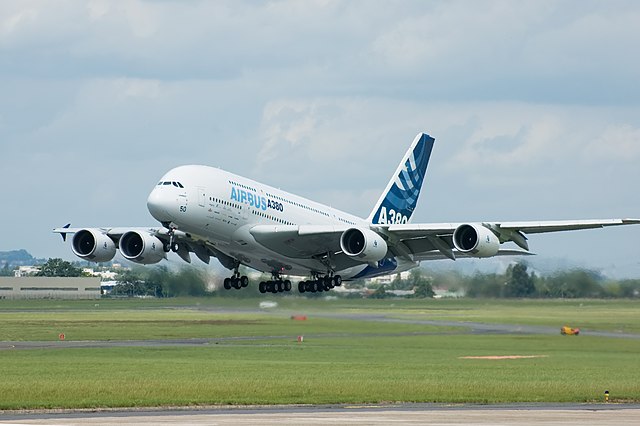
The Four Forces Of Flight
What Keeps Planes In The Air?
Have you ever looked up at the sky and marvelled at aeroplanes, defying gravity and soaring through the clouds? We take the wonder of flight for granted much of the time, unless, of course, we are flying through heavy turbulence. But, behind the seemingly effortless motion of these aircraft lies a complex interplay of four forces: lift, weight, thrust and drag, that enable them to take off, manoeuvre and stay aloft.
Lift
Lift is the aerodynamic force that must be generated to overcome the weight of an aircraft, allowing it to take off and rise. It is generated primarily by the wings of the aircraft as it moves through the air. The shape of the wings, known as aerofoils, creates a pressure difference between the upper and lower surfaces. This pressure difference results in an upward force, lifting the aircraft against the pull of gravity. Tilting the wing upwards deflects the air downward, creating more lift, and is used to help the plane climb, and vice versa!
Weight
Weight is the gravitational force exerted on an aircraft due to its mass. It acts downward towards the centre of the Earth and is equal to the mass of the aircraft multiplied by the acceleration due to gravity (F=mg). For an aircraft to achieve flight, the lift generated by its wings must equal or exceed its weight.
Thrust
Thrust is the force that propels an aircraft forward through the air. It is generated by engines or propulsion systems such as propellers or jet turbines which expel air or gases and generate thrust that overcomes drag (defined next), causing the aircraft to accelerate and maintain its speed.
Drag
Drag is the aerodynamic force that opposes the motion of an aircraft through the air. It is caused by the friction between the aircraft’s surfaces and the air molecules it encounters.
Stages Of Flight
These four forces combine to create and maintain flight in two stages. Firstly, during takeoff, the thrust provided by the engines accelerates the aircraft, allowing it to reach a speed at which lift generated by the wings exceeds the aircraft’s weight, enabling it to ascend into the sky. Then, when a plane is in steady, level flight, the four forces of flight are in a state of equilibrium. The lift generated by the wings balances the weight of the aircraft, while thrust overcomes drag to maintain forward motion.
If you are interested in studying Science or Physics, Oxford Open Learning offer the chance to do so at a number levels, listed below. You can also Contact Us by clicking here.